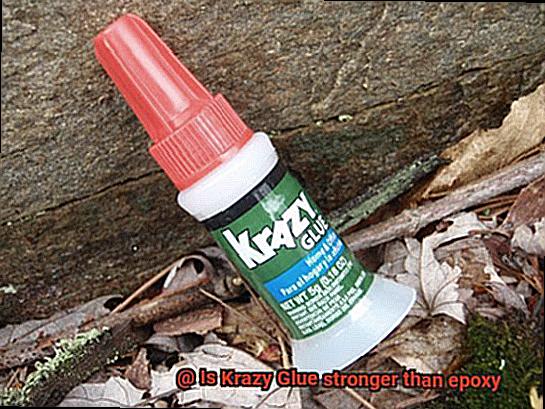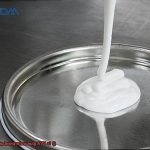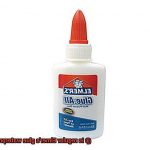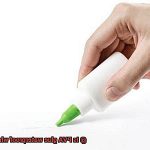Have you ever been in a sticky situation where you needed an adhesive that could fix things quickly? Adhesives are essential for repair work and DIY projects, but with so many options available in the market, it can be overwhelming to determine which one is the best fit for your needs.
Enter Krazy Glue and epoxy – two popular adhesives that have been around for years. Krazy Glue is known for its fast-drying, instant-bonding capabilities, while epoxy is a two-part adhesive that creates a strong, durable bond. But the question remains: which one is stronger?
In this blog post, we’ll explore the age-old question: Is Krazy Glue stronger than epoxy? We’ll delve into the composition and properties of each adhesive, their bonding strengths, and how they perform under different conditions. By the end of this article, you’ll have a better understanding of which adhesive is better suited for your next project.
So sit tight and get ready to glue yourself to this article as we take a deep dive into the world of adhesives and determine whether Krazy Glue or epoxy comes out on top.
Advantages of Krazy Glue
Contents
When it comes to adhesive solutions, Krazy Glue stands out from the rest with its exceptional bonding properties and unique advantages. Here are some reasons why Krazy Glue is a popular choice among professionals and DIY enthusiasts alike:
Firstly, Krazy Glue bonds surfaces quickly and securely. In a matter of seconds, this instant adhesive can bond surfaces together without the need for clamps or additional tools. This makes it perfect for emergency repairs or quick fixes around the house.
Secondly, Krazy Glue is versatile and can bond various materials together. From plastics to metals, ceramics to wood, Krazy Glue can handle them all. This versatility makes it a handy adhesive to keep in your toolbox or workshop for a wide range of applications.
Thirdly, Krazy Glue is effortless to use. With its convenient tube or bottle and precise applicator tip, applying Krazy Glue is a breeze. Unlike other adhesives that require mixing multiple components before application, Krazy Glue’s straightforward process saves you time and effort.
Finally, Krazy Glue is affordable and easily accessible. You can find it at most hardware stores or online retailers for an affordable price. This accessibility makes it an excellent option for those who are looking for high-quality adhesive on a budget.
Disadvantages of Krazy Glue
Krazy Glue, also known as cyanoacrylate adhesive, is a popular choice with its strong bonding properties. However, it has some disadvantages that users should consider before using it.

One significant shortcoming of Krazy Glue is its brittleness. It may form a strong bond quickly, but it can also become brittle over time. If the bonded object experiences any stress or pressure, the bond may break. This can be a significant issue for items that need to withstand heavy loads or movement.
Moreover, Krazy Glue is not suitable for all materials. It works well on non-porous surfaces such as metal, plastic, and glass, but it may not adhere well to porous materials such as wood or fabric. If you’re working with porous materials, you may need to apply the glue repeatedly or use a different type of adhesive altogether.
Another disadvantage of Krazy Glue is its short shelf life once opened. The glue can dry out quickly if not stored correctly, and users may find themselves needing to purchase a new tube of glue frequently. This is particularly frustrating if you don’t use the glue often.
Furthermore, Krazy Glue is not waterproof or heat resistant, making it unsuitable for use in applications where it will be exposed to water or high temperatures. This can be a significant issue for items used outdoors or in hot environments. If you plan on using the adhesive for such applications, Krazy Glue may not hold up well under those conditions.
Advantages of Epoxy
If you’re in need of an adhesive that can handle tough environments and heavy-duty applications, look no further than epoxy. This superhero of adhesives boasts numerous advantages over other types of adhesives, including exceptional bonding strength, chemical resistance properties, versatility, and durability.
One of the most impressive advantages of epoxy is its ability to penetrate and bond with surfaces at a molecular level. Regardless of the material – metal, plastic, glass, or wood – epoxy forms a strong and long-lasting bond that won’t easily break down over time.
But that’s not all – epoxy is also a tough contender when it comes to harsh weather conditions and high temperatures. Unlike other adhesives that may weaken or break down under these circumstances, epoxy remains strong and reliable. So whether you’re working on an outdoor project or in a harsh chemical environment, you can trust that epoxy will hold up.
Speaking of chemicals, epoxy also has excellent resistance properties. It can resist acids, alkalis, solvents, and oils – making it perfect for use in industrial settings such as chemical processing plants and laboratories.
Not only is epoxy strong and durable, but it’s also highly versatile. It can be formulated to meet specific requirements such as fast curing time, flexibility, or conductivity. This means it can be used in a wide range of industries such as automotive, aerospace, construction, and electronics.
Disadvantages of Epoxy
While epoxy has gained popularity for its exceptional bonding strength, it also comes with its fair share of disadvantages that cannot be ignored.
One of the main drawbacks of epoxy is its toxicity. Epoxy contains harmful chemicals that can cause skin and eye irritation, and respiratory problems when inhaled. It’s crucial to use this adhesive in a well-ventilated area and wear protective gear such as gloves and goggles to avoid any unwanted health issues.
In addition to its toxicity, another downside of epoxy is its long curing time. Unlike other adhesives like Krazy Glue, which can bond surfaces within seconds, epoxy can take up to 24 hours or more to cure completely, depending on the temperature and humidity of the environment. So if you’re looking for a quick fix, consider other alternatives.
Removing cured epoxy can also be challenging. Unlike Krazy Glue, which can be dissolved with acetone or nail polish remover, removing cured epoxy requires sanding or scraping, which can damage the surface it was applied to. So if you’re planning on using epoxy for a temporary fix, think twice before applying it.
Lastly, epoxy tends to yellow over time when exposed to sunlight or UV rays. This can be unsightly and affect the appearance of the surface it was applied to. Therefore, it’s not recommended for use in areas where it will be exposed to direct sunlight.
Strength Comparison: Krazy Glue vs Epoxy
When it comes to fixing things around the house, choosing the right adhesive can be a make-or-break decision. With so many options available, it’s easy to get overwhelmed. Two popular choices, Krazy Glue and epoxy, are often pitted against each other in terms of their strength and application.
First, let’s talk about strength. It’s true that epoxy is generally considered to be stronger than Krazy Glue due to its ability to create a chemical bond with the surface it’s applied to. However, this doesn’t mean that Krazy Glue is weak by any means. In fact, Krazy Glue’s physical bond can be just as strong in certain situations.
One important factor to consider when choosing between Krazy Glue and epoxy is the type of materials you’re working with. Epoxy is great for rough or uneven surfaces as it can fill in gaps and create a strong bond. On the other hand, Krazy Glue is ideal for smooth surfaces like metal or glass where there are no gaps to fill.
Ease of application is another crucial aspect to consider. Krazy Glue wins points here as it is incredibly easy to use. Simply apply a small amount and press the two surfaces together. Epoxy requires more precise mixing and application in order to achieve the strongest bond possible.
Best Uses for Each Type of Adhesive
Adhesive selection can be a tricky business, but with a little bit of knowledge about the different types of adhesives and their best uses, you’ll be able to pick the perfect one for your project. As an expert on the topic, I’m here to guide you through the world of adhesives and help you make an informed decision.
Let’s start with Krazy Glue, also known as cyanoacrylate adhesive. This fast-drying and strong adhesive is perfect for bonding non-porous surfaces such as metal, plastic, and ceramics. Its unique formula allows it to bond surfaces that other adhesives struggle with, making it a go-to choice for many DIYers. Plus, its physical bond can be just as strong as epoxy in certain situations. So, if you need to bond a smooth surface with no gaps to fill, Krazy Glue is the way to go.
Now, let’s move on to epoxy. This two-part adhesive consists of a resin and a hardener and is known for its strength and durability. If you need to bond materials such as wood, glass or concrete, then epoxy is your best bet. It’s resistant to water and heat, which makes it ideal for outdoor applications.
But how do you know which adhesive to choose for your project? The key is to consider the materials being bonded and the conditions in which the bond will be subjected. If you’re bonding plastic or metal, Krazy Glue is your best option due to its ability to bond non-porous surfaces. However, if you’re working with wood or glass and need a strong and durable bond that can withstand water or heat exposure, then epoxy is the way to go.
In addition to Krazy Glue and epoxy, there are many other types of adhesives available on the market. Some other popular options include hot glue, super glue, and wood glue. Each has its own unique properties and best uses, so it’s important to do your research and choose the right adhesive for your specific project.
Tips for Choosing the Right Adhesive
Selecting the right adhesive is an important step in the success of any project. With so many options available, it can be challenging to know where to start. Here are five factors to consider when choosing the right adhesive:
Material Compatibility
Different adhesives are designed to work with specific materials. It’s crucial to choose an adhesive that is compatible with both materials you need to bond. For instance, if you want to bond plastic and metal, Krazy Glue would be ideal. If you need to bond porous surfaces like wood or fabric, then epoxy may be a better choice.
Strength of Bond
The strength of the bond required is another essential factor to consider. Some adhesives provide a strong, permanent bond, while others provide a temporary bond that can easily be removed. Therefore, it is crucial to choose an adhesive that matches the strength needed for your project.
Environmental Factors
Environmental factors like temperature and moisture can affect the effectiveness of certain adhesives. For example, if your project will be exposed to heat or cold, you will need an adhesive that can withstand such conditions. Ensure you choose an adhesive that can hold up under the conditions it will be exposed to.
Application Method
Adhesives come in various forms like spray cans, tubes, and two-part mixes. Choosing an adhesive with an application method that suits your skill level is essential to achieve a successful bond. Carefully read the instructions and select an adhesive that fits your comfort level and meets your application needs.
Drying Time
The drying time of an adhesive is another important factor to consider. Some adhesives dry quickly, while others take longer to set. If you need to adjust or move bonded materials during the drying process, then a faster-drying adhesive may be more appropriate.
Common Misconceptions About Krazy Glue and Epoxy
Before you start bonding materials together, it’s important to dispel some common misconceptions about these adhesives.
Firstly, strength is a major consideration. Many believe that Krazy Glue is stronger than epoxy, but this isn’t always the case. While Krazy Glue can be strong in some situations, it’s not always the best choice for every project. Epoxy comes in many varieties with varying levels of strength, so it’s important to choose the right type for your specific needs.
Secondly, not all epoxies are created equal. There are different types with differing curing times, strengths, and application methods. It’s crucial to research and select the right type of epoxy for your project to achieve the best results.
Thirdly, people often assume that Krazy Glue and epoxy can be used interchangeably. This isn’t true as Krazy Glue is a cyanoacrylate adhesive that bonds quickly to surfaces through a chemical reaction with moisture in the air. Meanwhile, epoxy requires mixing before application and takes longer to cure. So, depending on your project’s complexity and time constraints, one may be a better choice than the other.
Lastly, it’s worth noting that both Krazy Glue and epoxy have their limitations. While they’re versatile adhesives, they may not work on every surface or material. For instance, Krazy Glue may not bond well with certain plastic or metal surfaces, while some types of epoxy may not adhere well to porous materials like wood.
_vR15u0vmms” >
Also Read: Does Krazy Glue Work on Metal?
Conclusion
In conclusion, selecting the right adhesive for your project is a critical decision that can make or break its success. Krazy Glue and epoxy are two adhesives that have their own distinctive advantages and disadvantages. Krazy Glue is renowned for its rapid-drying, instant-bonding capabilities and adaptability in bonding various materials together. However, it can become brittle over time, has a limited shelf life once opened, and may not be suitable for all materials or environments.
Epoxy, on the other hand, creates a robust and durable bond on rough or uneven surfaces with exceptional resistance properties to chemicals, water, and heat. However, it can be toxic, has an extended curing time and tends to yellow over time when exposed to sunlight.
Regarding strength comparison between these two adhesives, epoxy is generally considered stronger than Krazy Glue due to its ability to create a chemical bond with the surface it’s applied to. Nevertheless, Krazy Glue’s physical bond can be just as sturdy in specific circumstances. Therefore, choosing the appropriate adhesive requires considering the materials being bonded and the conditions under which the bond will be subjected.
Lastly, it’s essential to debunk some common misconceptions about these adhesives. Strength should not always be the only factor when selecting an adhesive; not all epoxies are created equal; Krazy Glue and epoxy cannot be used interchangeably; both have limitations on what surfaces or materials they can bond effectively.






